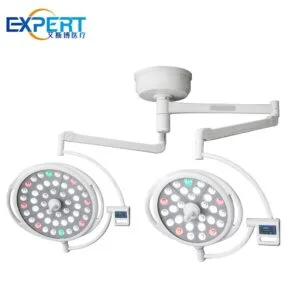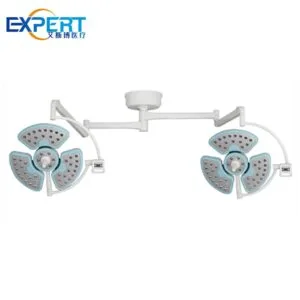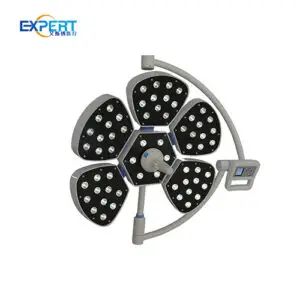Адрес
304 North Cardinal St.
Дорчестер-центр, Массачусетс 02124
Часы работы
С понедельника по пятницу: с 7:00 до 19:00.
Выходные: 10.00 - 17.00
Адрес
304 North Cardinal St.
Дорчестер-центр, Массачусетс 02124
Часы работы
С понедельника по пятницу: с 7:00 до 19:00.
Выходные: 10.00 - 17.00

В этой статье блога будут подробно рассмотрены различные характеристики хирургических светильников и их влияние на хирургические процедуры.
Добро пожаловать в мой блог!
Прежде чем мы погрузимся в контент, я бы хотел, чтобы вы присоединились ко мне на моих платформах социальных сетей, где я делюсь большим количеством идей, взаимодействую с сообществом и публикую обновления. Вот как вы можете связаться со мной:
Фейсбук:https://www.facebook.com/profile.php?id=100071234835011
LinkedIn:https://www.linkedin.com/company/74943205/admin/dashboard/
Ютуб:www.youtube.com/@shandongexpertmedicalequip4695
ТикТок:www.tiktok.com/@expertmedical
Теперь давайте начнем наше путешествие вместе. Надеюсь, вы найдете здесь контент проницательным, интересным и ценным.

Хирургические светильники являются важнейшим компонентом любой операционной. Качество освещения, обеспечиваемое этими светильниками, напрямую влияет на способность хирурга выполнять процедуры точно и безопасно. Оптимальные характеристики хирургических светильников имеют важное значение для достижения наилучших возможных результатов хирургических операций. В этой записи блога будут подробно рассмотрены различные характеристики хирургических светильников и то, как они влияют на хирургические процедуры.
Интенсивность света, измеряемая в люксах, определяет яркость операционного поля. Адекватная интенсивность света имеет жизненно важное значение для визуализации сложных анатомических структур. Цветовая температура, измеряемая в Кельвинах (К), влияет на восприятие цвета ткани. Цветовая температура, близкая к естественному дневному свету (около 5000 К), обычно предпочтительна для обеспечения точной дифференциации тканей. Технические характеристики хирургических светильников, относящиеся к этим двум областям, очень важны.
Недостаточная интенсивность света может привести к зрительному утомлению и ошибкам во время операции. И наоборот, чрезмерная яркость может вызвать блики и дискомфорт. Идеальная интенсивность света варьируется в зависимости от типа операции и предпочтений хирурга.
Соответствующая цветовая температура обеспечивает естественный вид тканей, помогая выявлять тонкие различия. Это особенно важно при процедурах, в которых задействованы нежные ткани и кровеносные сосуды.


Уменьшение тени минимизирует помехи свету от хирургических инструментов и рук хирурга. Размер светового поля определяет область освещения, гарантируя, что все операционное поле будет достаточно освещено.
Для минимизации теней используются множественные источники света и оптические конструкции. Это гарантирует хирургу четкий обзор операционного поля, даже при наличии инструментов.
Размер светового поля должен быть регулируемым для различных хирургических процедур. Большее световое поле необходимо для открытых операций, тогда как меньшее, более сфокусированное световое поле подходит для минимально инвазивных процедур.
Глубина освещения относится к способности света проникать глубоко в хирургическую полость. Равномерность обеспечивает равномерное распределение света по операционному полю.
В глубоких полостных операциях достаточная глубина освещения имеет решающее значение для визуализации структур на дне полости. Для этого требуются хирургические светильники с характеристиками, которые обеспечивают сфокусированный и проникающий свет.
Равномерное освещение минимизирует нагрузку на глаза и улучшает остроту зрения. Равномерное распределение света по операционному полю имеет важное значение для поддержания фокуса и точности.
Светодиодные хирургические лампы предлагают несколько преимуществ по сравнению с традиционными галогенными лампами, включая более длительный срок службы, меньшее тепловыделение и лучшую энергоэффективность. Технические характеристики светодиодных хирургических ламп в настоящее время очень продвинуты.
Светодиоды потребляют меньше энергии и имеют более длительный срок службы, что снижает расходы на обслуживание и время простоя. Это делает их экономически эффективным и устойчивым вариантом для хирургического освещения.
Светодиоды выделяют меньше тепла, что минимизирует риск повреждения тканей и повышает комфорт пациента. Это особенно важно при длительных хирургических процедурах.
| Технические характеристики | Единица измерения | Важность |
|---|---|---|
| Интенсивность света | Люкс | Обеспечивает достаточную яркость для визуализации анатомических структур. |
| Цветовая температура | Кельвин (К) | Влияет на восприятие цвета тканей, способствуя их дифференциации. |
| Уменьшение теней | Процент (%) | Минимизирует помехи для света от инструментов и рук. |
| Размер светового поля | Диаметр (см) | Определяет площадь освещения, обеспечивая полное покрытие. |
| Глубина освещения | Миллиметры (мм) | Способность света глубоко проникать в хирургические полости. |
| Однородность | Соотношение | Обеспечивает равномерное распределение света по операционному полю. |
| CRI (индекс цветопередачи) | Рейтинг | Показывает, насколько точно источник света передает истинные цвета. |
Хирургические светильники должны легко регулироваться для оптимального позиционирования. Это гарантирует, что хирург может направить свет именно туда, где он нужен.
Регулируемые кронштейны и головки светильников позволяют хирургу располагать свет под разными углами, подстраиваясь под различные хирургические подходы.
Интуитивное управление и плавные настройки сводят к минимуму помехи во время операции. Это позволяет хирургической бригаде сосредоточиться на процедуре.
Регулярная очистка и стерилизация необходимы для предотвращения инфекций и поддержания работоспособности хирургических светильников.
Хирургические светильники должны быть изготовлены из материалов, которые легко чистить и дезинфицировать. Для обеспечения эффективной стерилизации следует соблюдать стандартизированные процедуры очистки.
Регулярные проверки и техническое обслуживание могут предотвратить неисправности и продлить срок службы хирургических светильников. Это включает проверку интенсивности света, цветовой температуры и механических компонентов.

Малоинвазивные операции часто требуют использования специализированных осветительных решений для освещения небольших и глубоких полостей.
Эндоскопические осветительные системы обеспечивают освещение через эндоскоп, гарантируя четкую визуализацию операционного поля. Технические характеристики хирургических светильников для эндоскопов очень важны.
Интеграция с системами визуализации позволяет визуализировать и документировать хирургические процедуры в реальном времени. Это расширяет возможности хирурга по навигации и выполнению точных маневров.
Оптимальный Технические характеристики хирургических светильников имеют решающее значение для достижения наилучших возможных результатов хирургического вмешательства. Понимая различные характеристики и их влияние на хирургические процедуры, специалисты здравоохранения могут принимать обоснованные решения при выборе и использовании хирургических светильников. Постоянное развитие технологий еще больше улучшит хирургическое освещение, повысив безопасность пациентов и точность хирургических операций. Выбор правильных характеристик хирургических светильников может повлиять на успех операции.
Какова идеальная интенсивность света для хирургических операций?
Идеальная интенсивность освещения варьируется в зависимости от типа операции и предпочтений хирурга, но обычно составляет от 40 000 до 160 000 люкс.
Почему цветовая температура важна в хирургическое освещение?
Цветовая температура влияет на восприятие цвета ткани, помогая выявлять тонкие различия и обеспечивая точную дифференциацию тканей.
Каковы преимущества светодиодов? хирургические светильники?
Светодиодные хирургические светильники отличаются более длительным сроком службы, меньшим тепловыделением, более высокой энергоэффективностью и меньшими затратами на техническое обслуживание по сравнению с традиционными галогенными светильниками.
Каким образом уменьшение тени улучшает результаты хирургического вмешательства?
Уменьшение теней сводит к минимуму помехи для света от инструментов и рук, обеспечивая четкий обзор операционного поля и повышая точность хирургического вмешательства.